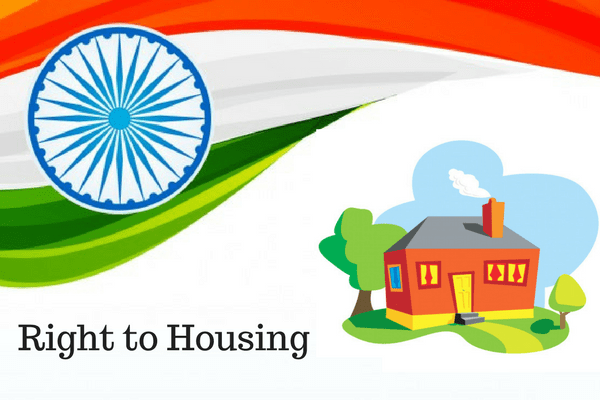On 26th January 1950, our constitution came into being. The founding fathers of Independent India enshrined various rights and duties for citizens of India. We consider one aspect, one right which seems to have alluded thousands of citizens to this day. Historically, land and land revenue have been under the purview of state governments as per our federal structure.
Housing is one of the primary needs of any individual. It is merely not a financial investment but a major part of the economy and a person’s being. Given the significance of housing to the upliftment of the nation, is not correct to consider the right to shelter and housing in the Constitution as a legitimate right to demanded by the citizen from the government? Or the mere existence of such right would not be necessary?
It is given that housing is a necessity to an ideal living of a person and the nation. Unfortunately, right to shelter and housing has not enjoyed the same status as other liberties and rights assured by the State. Nonetheless, it is required that the State creates a suitable setting for the enforcement of this right, especially keeping in mind the spill over impact on prosperity and wellbeing of the State.
“The Indian Constitution mentions Fundamental Rights under Chapter 3. Protection of Life and Personal liberty can be found under Article 21. It states that no person shall be deprived of his life or personal liberty. It is this section that has been interpreted by the Courts to connect it to Right to Housing. ”
The government of India went on to form in 1988, the National Housing Policy, which was revised in 1994. Subsequently, in 1998 the National Housing and Habitat Policy was formed. But, there have been some straight hiccups for the right to shelter. It opens up the possibility of encroachments of public places, footpaths, roads and even private property. The encroacher takes refuge under the constitution and settlements are created and flourish under miserable conditions. Such an environment might go on to promote criminal or unlawful activities. This is especially true in the Indian urban context where slums have been allowed to foster posing grave environmental and health risks. The housing gap in India is huge and private developers have not been able to contribute as much as is required by them. The government schemes as mentioned above also have not been able to really bridge this gap.
Another aspect of the right to housing & shelter is the discrimination and bias which still exists in Indian housing markets. While this is mostly prevalent in the secondary housing markets, nonetheless, the fact that sellers pick buyers according to their caste, religion, creed or color is a huge challenge for our present systems.
It is significant to note the example of South Africa in this context. Its constitution has clearly mentioned the right to housing as a fundamental right under Article 26 and article 28 of the Bill of Rights. Thus, it makes it binding on the State to provide adequate shelter to citizens.
To be sure, India is progressing well to address its housing needs. But much more needs to be done to ensure that such a basic need does not remain a distant need for people.




